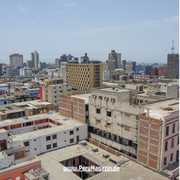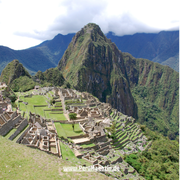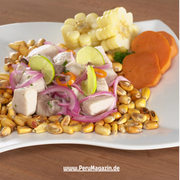
Peru, a country in western South America, is rich in history, culture and stunning natural beauty. From the majestic peaks of the Andes to the dense Amazon rainforest, Peru offers a wealth of landscapes and attractions that attract visitors from all over the world. This comprehensive article presents the most important facts and figures about Peru.

|
 |
|
Peru Flag |
Peru flag with coat of arms |
geography
Peru is located in western South America and borders Ecuador and Colombia to the north, Brazil to the east, Bolivia to the southeast and Chile to the south. The country stretches from the Pacific Ocean in the west to the Amazon rainforest in the east and covers an area of about 1.3 million square kilometers.
 |
 |
 |
Peru's geographical diversity is remarkable. The majestic Andes Mountains run through the country from north to south and are home to some of the highest peaks in the world, including Huascarán, which reaches over 6,700 metres. To the east lies the Amazon rainforest, which covers much of the country and is home to incredible biodiversity.
A narrow coastal plain stretches along the Pacific coast, known for its fertile soils. Lima, the capital of Peru, is located on this coast and is the economic and cultural center of the country.

Population and culture
Peru has a rich cultural diversity that is the result of a long history of indigenous civilizations, European colonization, and African slavery. Peru's population is ethnically and culturally diverse, with most people having a mix of indigenous, European, and African roots.
The official language is Spanish, but there are also many indigenous languages, including Quechua and Aymara, spoken by different population groups. This diversity is also reflected in Peru's rich cultural tradition, which is expressed in art, music, dance and religion.

|
 |
 |
Peruvian cuisine is known worldwide and is considered one of the most diverse and delicious cuisines in the world. Famous Peruvian dishes include ceviche, a dish made with raw fish, lime juice, onions and chilies, and lomo saltado, a dish made with marinated beef, onions, tomatoes and French fries.
Story
Peru's history stretches back thousands of years and is marked by a variety of indigenous civilizations, including the Inca, Moche, Nazca and Chachapoya. Before the arrival of the Spanish in the 16th century, Peru was the center of the mighty Inca Empire, which stretched across much of South America.

|
 |
 |
The Spanish conquest of Peru began in 1532 under the leadership of Francisco Pizarro and led to the destruction of the Inca Empire and the establishment of Spanish colonial rule. Peru remained a colony of Spain for almost three centuries until it gained independence in 1821.
Since its independence, Peru has experienced various political and economic challenges, including political instability, economic inequality, and social unrest. However, in recent decades the country has made significant progress and become a stable democracy with a growing economy.
Business
Peru has a diverse and emerging economy based on mining, agriculture, fishing, tourism and services. The country is rich in natural resources such as gold, silver, copper, zinc and natural gas, which contribute significantly to the country's export volume.

Agriculture also plays an important role in the Peruvian economy, with products such as coffee, sugar cane, potatoes and cotton being grown. Tourism is another important industry, attracting millions of visitors from around the world to experience Peru's rich culture, history and nature.
Tourism and attractions
Peru is a popular tourist destination and offers a wealth of sights and activities for visitors of all ages and interests. One of the most famous sites is undoubtedly Machu Picchu, the legendary Inca city perched on a mountaintop in the Andes that attracts thousands of visitors each year.

|
 |
 |
Other popular destinations include the Nazca Lines, mysterious geoglyphic figures drawn in the Nazca Desert, Lake Titicaca, the highest navigable lake in the world, and the city of Cusco, the former capital of the Inca Empire and now a vibrant cultural center.
Challenges and future prospects
Despite its natural and cultural riches, Peru faces a number of challenges, including poverty, social inequality, environmental pollution and political instability. The country's rural and indigenous communities in particular suffer from a lack of access to education, healthcare and other basic services.
Nevertheless, Peru has made significant progress in recent years to address these challenges, and there are signs of a positive future. By investing in education, infrastructure and sustainable development, Peru strives to improve the lives of its citizens and realize its potential as a leading economic power in the region. 
Peru is a fascinating country with a rich history, diverse cultures and stunning natural beauty. From the majestic peaks of the Andes to the lush Amazon rainforest, Peru offers a variety of sights and activities for visitors of all ages and interests. Despite the challenges the country faces, Peru has made significant progress and is moving toward a positive future where all of its citizens have the opportunity to live fulfilling and successful lives.



